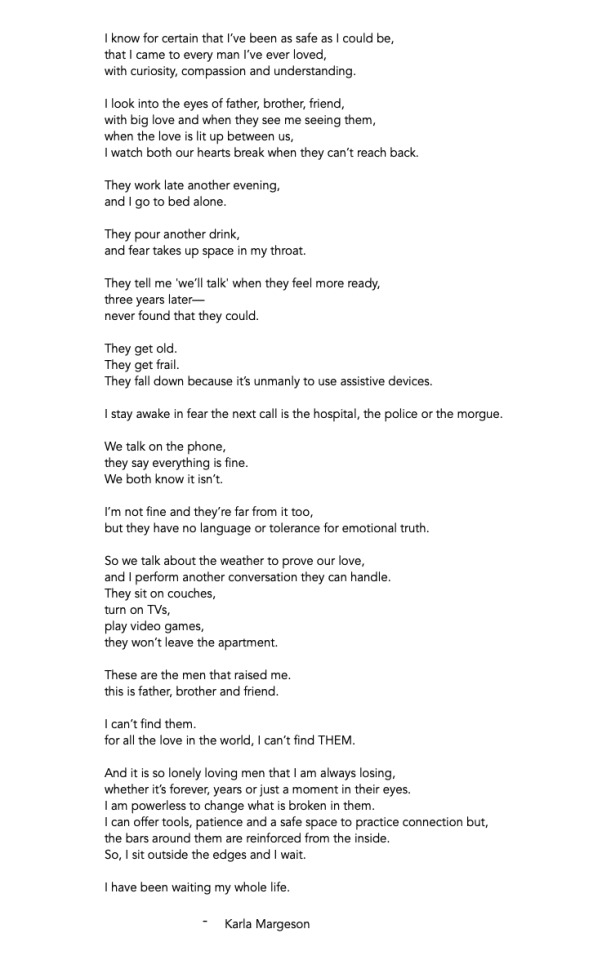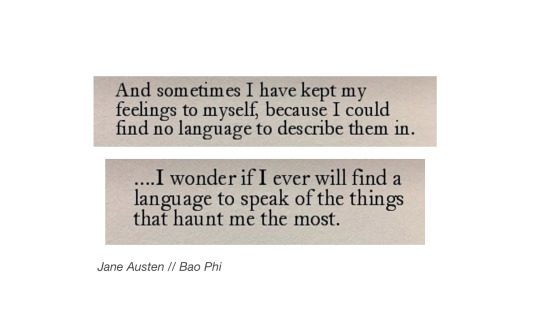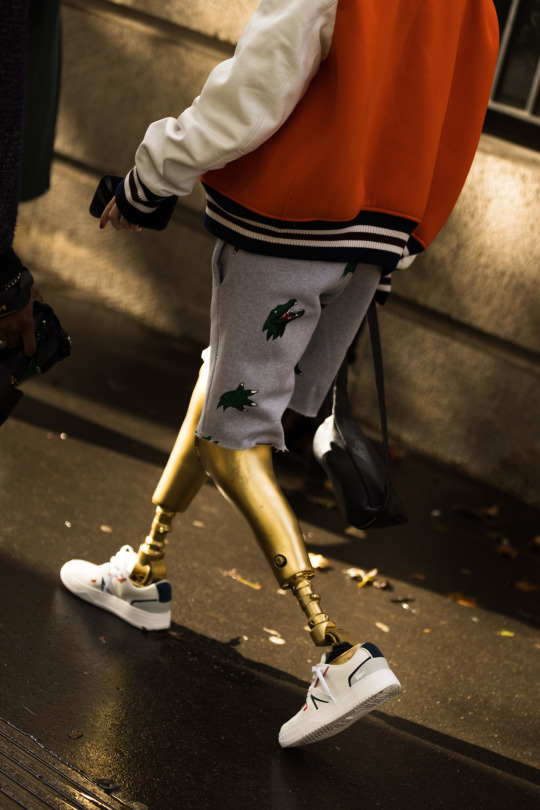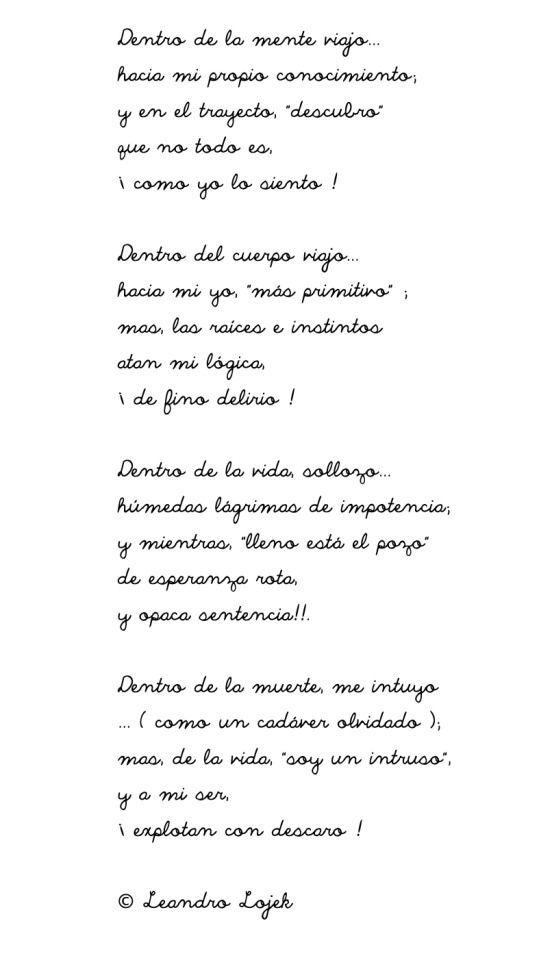Quote
A poem begins with a lump in the throat.
Robert Frost
9 notes
·
View notes
Text
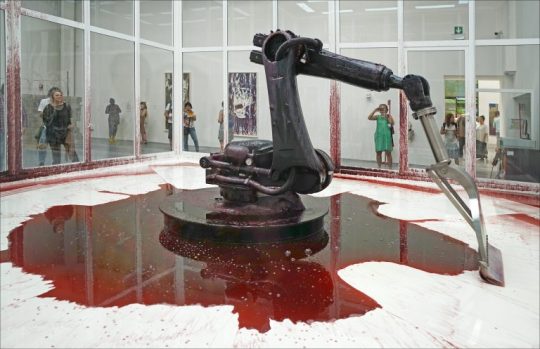
“I don’t think any piece of art has ever emotionally affected me the way this robot arm piece has affected me. It’s called “Can’t Help Myself” and it’s a robot arm that’s programmed to clean up the fluid that’s constantly leaking out of itself, that looked like a never ending flow of blood. It has programmed dance moves to make it appear to have human gestures. And at first, it seemed happy and proud of its job, dancing around when it had visitors. But three years later, it looks tired, hopeless, and like it’s living in a never ending cycle of constantly trying to put itself back together for the entertainment of other people. And when I found out that it had finally stopped working in 2019, essentially dying, I couldn’t help but imagine the relief it must’ve felt and so I’ve been in here crying over a robot arm. It was programmed this way, it truly couldn’t help itself. And no one ever helped him, they just watched.” - Mulandra Snead

About The Piece
In this work commissioned for the Guggenheim Museum, Sun Yuan & Peng Yu employ an industrial robot, visual-recognition sensors, and software systems to examine our increasingly automated global reality, one in which territories are controlled mechanically and the relationship between people and machines is rapidly changing. Placed behind clear acrylic walls, their robot has one specific duty, to contain a viscous, deep-red liquid within a predetermined area. When the sensors detect that the fluid has strayed too far, the arm frenetically shovels it back into place, leaving smudges on the ground and splashes on the surrounding walls.
Sun Yuan & Peng Yu are known for using dark humor to address contentious topics, and the robot’s endless, repetitive dance presents an absurd, Sisyphean view of contemporary issues surrounding migration and sovereignty. However, the bloodstain-like marks that accumulate around it evoke the violence that results from surveilling and guarding border zones. Such visceral associations call attention to the consequences of authoritarianism guided by certain political agendas that seek to draw more borders between places and cultures and to the increasing use of technology to monitor our environment.
All sourcing and more info about the piece here.
75 notes
·
View notes
Photo
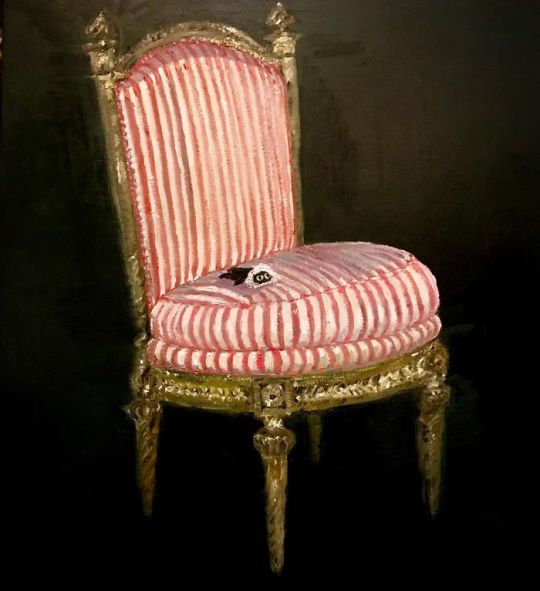
“Kevin Thinking Hard” by Vanessa Stockard.
14 notes
·
View notes
Audio
Song of the day.
3 notes
·
View notes
Photo



Bookmark: A Collection of Items Found in Returned Library Books
The maker of the small-town installation is Ali Beaudette, who has been working in libraries since she was 15 years old. While still in high school, a colleague of hers, who was about to retire, gave her a precious collection. For 20 years, this colleague accrued ticket stubs, photos, playing cards, and more that people had left behind in their library books, presumably as bookmarks.
Beaudette kept this collection and added to it herself as she worked in six different libraries in New England since then. In 2017, once she was enrolled at the Massachusetts College of Art and Design, she made an installation out of the various collected scraps from this quirky collection of scrap material. The resulting work, Bookmark: A Collection of Items, sat in storage until this month, when the installation was exhibited at the small library she currently in Greenville, Rhode Island, where Beaudette works.
“I’ve been trying to figure it why people responded so strongly to it,” Beaudette said. “On a really human level, I think people are very drawn to the tiny details of strangers lives, especially in this weird time where we have so much distance from each other.”
Beaudette’s work is an almost archeological record of sentimentality, small moments lost to time. It’s reminiscent of recent works by artists who document everyday detritus—including Tom Kiefer, who collected rosaries left behind by ICE detainees while he worked at a border facility as a janitor—and also reminds one of the old Southern folk practice of making memory jugs, in which objects like photos, toys, spoons, and bottle caps are stuck to old pitchers with cement. These pieces all have the miraculous effect of making us achingly aware of lives lived by complete strangers.
“I’m not the only one who keeps these objects,” Beaudette said. “I saw so many comments from library workers who said, ‘Oh, we do this too.’ It makes sense. I mean, you never know what is important to someone, what they’ll come back for.” [via.]
4 notes
·
View notes
Quote
Look for three things in a person--intelligence, energy and integrity. If they don't have the last one, don't even bother with the first two.
Warren Buffett
11 notes
·
View notes
Text
Plants Feel Pain + Might Even See
In 2018, a German newspaper asked me if I would be interested in having a conversation with the philosopher Emanuele Coccia, who had just written a book about plants, Die Wurzeln der Welt (published in English as The Life of Plants). I was happy to say yes.
The German title of Coccia’s book translates as “The Roots of the World,” and the book really does cover this. It upends our view of the living world, putting plants at the top of the hierarchy with humans down at the bottom. I had been giving a great deal of thought to this myself. Ranking the natural world and scoring species according to their importance or their superiority seemed to me outdated. It distorts our view of nature and makes all the other species around us seem more primitive and somehow unfinished. For some time now, I have not been comfortable with viewing humans as the crown of creation, separating animals into higher and lower life-forms, and treating plants as something on the side, definitively banished to a lower level.
And so I found the conversation with Coccia most refreshing when he visited our Forest Academy. A small bearded man, Coccia turned up in a blue suit and blue checkered tie, completely inappropriate attire for the outdoors, even though we had agreed that we would take a walk in the forest together. Although he is from Italy and now teaches in France and writes in French, he also speaks fluent German because at one time he studied and worked in Freiburg.
After our first cup of coffee, we were soon deep into our main topic: trees and plants in general. Coccia argued that our biological classifications are not grounded in science. They are strongly influenced by theology and are dominated by two ideas: the supremacy of the human race and the world as a place humans must bend to their will. And then there is our centuries-old compulsion to categorize everything. When you combine these concepts, you get a ranking system that puts humankind at the top, animals in the middle, and plants way down at the bottom.
I listened, fascinated by what he had to say. Here was a man of my own heart. I would prefer it, I told Coccia, if science categorized species one beside the other. That would still allow an order, a system of sorting, without imposing any kind of a hierarchy. He immediately agreed. He reiterated his belief that the ordering system we have today is not scientific but rather influenced by cultural, historical, and religious values. For Coccia, the hard boundary between the plant and animal world does not exist. He believes plants can experience sensations and even reflect on them. And he is not the only one who thinks this.
František Baluška is also very good at making inconceivable connections. Baluška, a plant cell biologist at University of Bonn, has for some time now been of the opinion that plants are intelligent—after all, they can process information and make decisions. But do plants have consciousness? That takes the discussion to a whole different level. If we could prove that plants have consciousness, we would have to radically change the way we interact with them, because we’d find ourselves facing the same kinds of issues that we face with factory farming in conventional agriculture.
Baluška, together with colleagues from around the world, including Stefano Mancuso from the University of Florence, has come a little closer to answering the question about plant consciousness. Baluška and his colleagues sedated plants that feature moving parts, such as Venus flytraps. These plants catch their prey in a trap that snaps shut as soon as insects touch trigger hairs on the inner side of their double-lobed leaves. The two sides of the leaf fold together in a flash, capturing the insect between them, and the plant then digests its prey. The anesthetics the scientists used, which included some that are used on people, deactivated electric activity in the plants so that the traps no longer reacted when they were touched. Sedated peas showed similar changes in behavior. Their tendrils, which usually move in all directions as they slowly feel their way through their surroundings to find supporting structures to grow on, stopped searching and started to spiral on the spot. After the plants broke the narcotics down, they resumed their normal behavior.
Did the plants wake up as we do when we come to after a general anesthetic? This is the critical question, because in order to wake up, you need one thing above all others: consciousness. And it was exactly this question that a reporter from The New York Times posed to Baluška. I really liked his answer: “No one can answer this because you cannot ask [the plants].”
I excitedly imagined what Baluska’s kind of plant research would look like: well-equipped laboratories with plants all over the place monitored by elaborate apparatuses finally giving up their secrets. That was something I absolutely had to see. On a sunny afternoon in 2018, I parked my car in front of his institute. I took a musty-smelling elevator to the fourth floor. Then (according to the email I received from Baluška), I was to turn right when I stepped out of the elevator and take a flight of wooden stairs up to his office. The corridor straight in front of the elevator door led to neat, uniformly gray rooms of the kind you expect to see in universities. The wooden staircase to the right led to an out-of-the-way corner in the huge building complex. Up there, on a tiny landing, Baluška greeted me with his strong Slovakian accent.
He led me into the conference room and we sat side by side at a huge round table. I was eager to hear what he had to say. After all, I had cited his research in my book The Hidden Life of Trees and repeatedly mentioned his groundbreaking research when I attended events. His results sounded so fantastic that I sometimes wondered if I had interpreted them correctly when I translated them into everyday language for the general public. Baluška immediately put my fears to rest.
One of the first things we talked about was how plants feel pain. Fellow foresters roll their eyes when I talk about spruce feeling pain when they are attacked by bark beetles. “Of course a plant, trees can feel pain,” the professor answered when I asked him about it. “Every life form must be able to do that in order to react appropriately.” He explained that there is evidence for this at the molecular level. Like animals, plants produce substances that suppress pain. He doesn’t see why that would be necessary if there was no pain.
Baluška was ready with other quite different discoveries. There’s a vine that grows in South America that adapts to the form of the tree or bush it is climbing on. Its leaves look just like the leaves on the host plant. You might think this is chemically controlled. In that case, the vine might be detecting scent compounds from the bush and changing the shape of its leaves in a way that was genetically predetermined. Three different leaf shapes had been observed. Then a researcher came up with the idea of creating an artificial plant with plastic leaves and relocating our botanical chameleon to its new home. What happened next was amazing. The vine imitated the artificial leaves, just as it had imitated the leaves in nature. For Baluška this is clear proof that the vine can see. How else could it get information about a shape it had never encountered before? In this case, the usual suspects—chemical messages released by the host plant or electric signals between both plants—were absent. He went further. In his opinion, it is conceivable that all plants might be able to see.
Up until then, the only thing I knew was that trees can differentiate between light and dark. Sleep behavior has been researched in birches and oaks, and beeches can measure day length—all of this requires light receptors that transmit signals to the trees and spur the whole organism into action. This is far removed, though, from vision in the sense of being able to recognize shapes and colors. And now this: plants which register precisely that and change their behavior accordingly. I found that astonishing.
Baluška directed me to research being done on the cuticle or outer layer of leaves. On most plants, this layer is completely transparent, which makes no sense if all the leaves are doing is collecting light to manufacture sugar. In that case, these outer cells should be equipped with green chloroplasts, the organs used for photosynthesis—after all, this is where the most sunlight falls. Logically, less light is harvested in layers farther from the surface. And yet the cuticle is transparent, which seems wasteful. Not only that. In several plants, the cuticle is constructed in the shape of a lens, which means that it focuses light, making the cuticle functionally similar to the lens in our eye. It doesn’t seem logical to me to focus light if photosynthesis is the only goal, because the cuticle could simply let the sun’s rays through. Focusing light doesn’t increase how much light falls on a leaf. The same amount of light is simply more concentrated or, more specifically, focused more intensely to the back of the cell.
Leaves that function like eyes? There’s an idea that takes some getting used to, particularly as a tree regularly discards its “eyes” in the autumn when its leaves fall off. Does that make leaves disposable eyes? In a certain sense, yes. A working life of six months (under European climate conditions) is relatively long in comparison with some animals. Flies, for example, use their eyes for little more than a month simply because that’s how long they live. And mayflies, which live for barely a day after metamorphosing from a larva into a flying insect, use their visual apparatus for less than 24 hours—and yet the eyes they have are real.
There’s another thing with trees. The cells in the leaves, once they are formed, last for the whole growing season, which means they are relatively long lived. In contrast, our eyes are in a constant state of partial rejuvenation: The cells in the outer cornea, for instance, are completely replaced every seven days.
You would think that plants experiencing pain and now the hypothesis that they might even be able to see would put the whole scientific community into a state of high excitement. The reaction, however, was muted. I had assumed that plant neurobiology was an up-and-coming scientific field. Baluška shook his head. He was practically the only one still studying the topic in depth. And that means this branch of science could disappear and be forgotten for a second time. The first time it disappeared was back in Darwin’s day.
Darwin had studied plant roots and even back then he postulated that the tips might function like the brains of simple animals. Roots containing “tiny brains”? The hard boundary between animal and plant could have fallen in his time. Could have. The research was put on hold for a hundred years and then suffered another blow from which it has not recovered to this day. The blow came in the form of a well-intentioned book by Peter Tompkins and Christopher Bird entitled The Secret Life of Plants, published in 1973. It was based on experiments that were not reproducible and definitely strayed from science into the mystic.
There was, however, another problem, Baluška explained. All the research on nerves, the brain, and phenomena such as pain had originally been done on people. All the important biological terminology, therefore, was already taken. This meant it would not be scientifically correct to transfer the definitions to plants that exhibited very similar structures and processes. And so, neurobiology was reserved for animals, which is why a similar periodical for plant research is called Plant Signaling & Behavior and not Plant Neuroscience. I immediately thought that philosophy and biology should be more closely connected, because Coccia’s thoughts on the subject matched those of Baluška.
The path to greater harmony between all life forms is long and turns on perspective and scientific clarity. For example, the more I think about the differences between conventional forestry and the original ecosystems of the forest, the more I conclude that the differences rest on a big misunderstanding. Conventional foresters believe that they are protecting ecosystems and through their stewardship are imitating or at most speeding up natural processes. However, the understanding of these ecosystems is grounded in a different philosophy about natural processes, in short in a different definition of evolution. This definition goes back to Darwin and his colleagues, who coined the phrase “survival of the fittest.” However, that doesn’t mean every life form fights every other life form and the strongest prevails. Rather, it’s more about being able to thrive in an environment and reproduce successfully. That is a completely different interpretation of “survival of the fittest” and means, for example, that social communities can also be very successful in nature.
Trees and wolves—and especially our own species—prove how successful social communities can be. A more accurate rendering of the phrase would be “survival of the most well adapted” (“fittest” in the sense of being the best fit rather than the strongest), which means survival of the species that manage best in the environment in which they find themselves. If that were not the case, evolution would mean that ever stronger and therefore perhaps also more aggressive species would be the ones that survived. If you read the phrase as the strong species surviving best, you would expect earlier species to have been underdeveloped, whereas in reality they were well adapted to the conditions that prevailed at the time. But because nature is always in flux, continents wander, and climate changes, the appearance and disappearance of species is not evolution in the sense of improvement but simply in the sense of adapting to new environmental conditions.
I, for one, used to interpret the phrase completely differently and thought that species were constantly improving until we finally got to us. And so, according to this outdated understanding, the logical conclusion was that humans stood at the pinnacle of creation. From a scientific point of view, however, this conclusion is incorrect. Its current meaning can only be explained from a cultural and religious perspective. And when we get to trees, we have got the wrong end of the stick completely, just like many foresters.
Foresters believe that trees not only of different species but also of the same species fight each other for light, water, and food. In managed forests, foresters get involved in what they think is the fight that plays out in undisturbed forests. You could say they see themselves as the referees. In Germany, I have often heard them say that the native forests could not survive without foresters. And yet, trees have existed for more than 300 million years, modern humans for 300,000, and the profession of forestry for just 300. For most of the time, trees have managed very well without human referees—in no small part because they have not been fighting.
And here I return to Coccia. He thinks it is a great shame that for the past 100 years we’ve seen nature as a huge war zone in which everyone is fighting everyone else. But, according to Coccia, nature is not a war zone. On the contrary, it is characterized by solidarity. To that thought, I have nothing to add.
0 notes
Photo


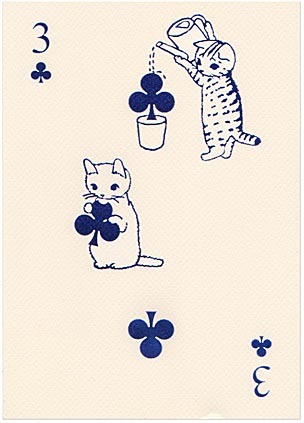
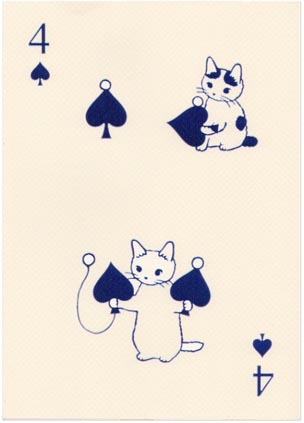
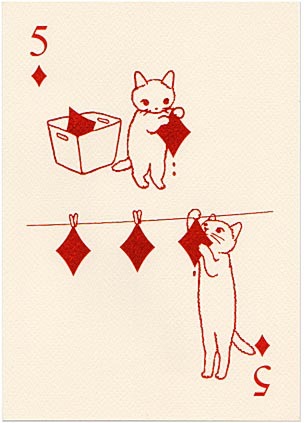


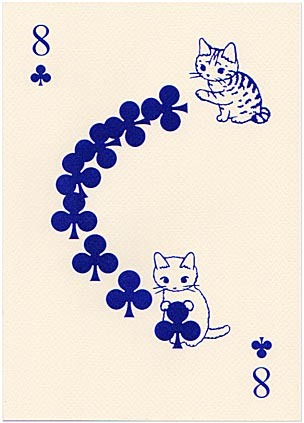
"A4 Size Playing Card" 8-piece series by Pottering Cat. Buy them here.
2K notes
·
View notes
Quote
If you hear a voice within you say, 'You cannot paint,' then by all means, paint, and that voice will be silenced.
Vincent Van Gogh
0 notes

